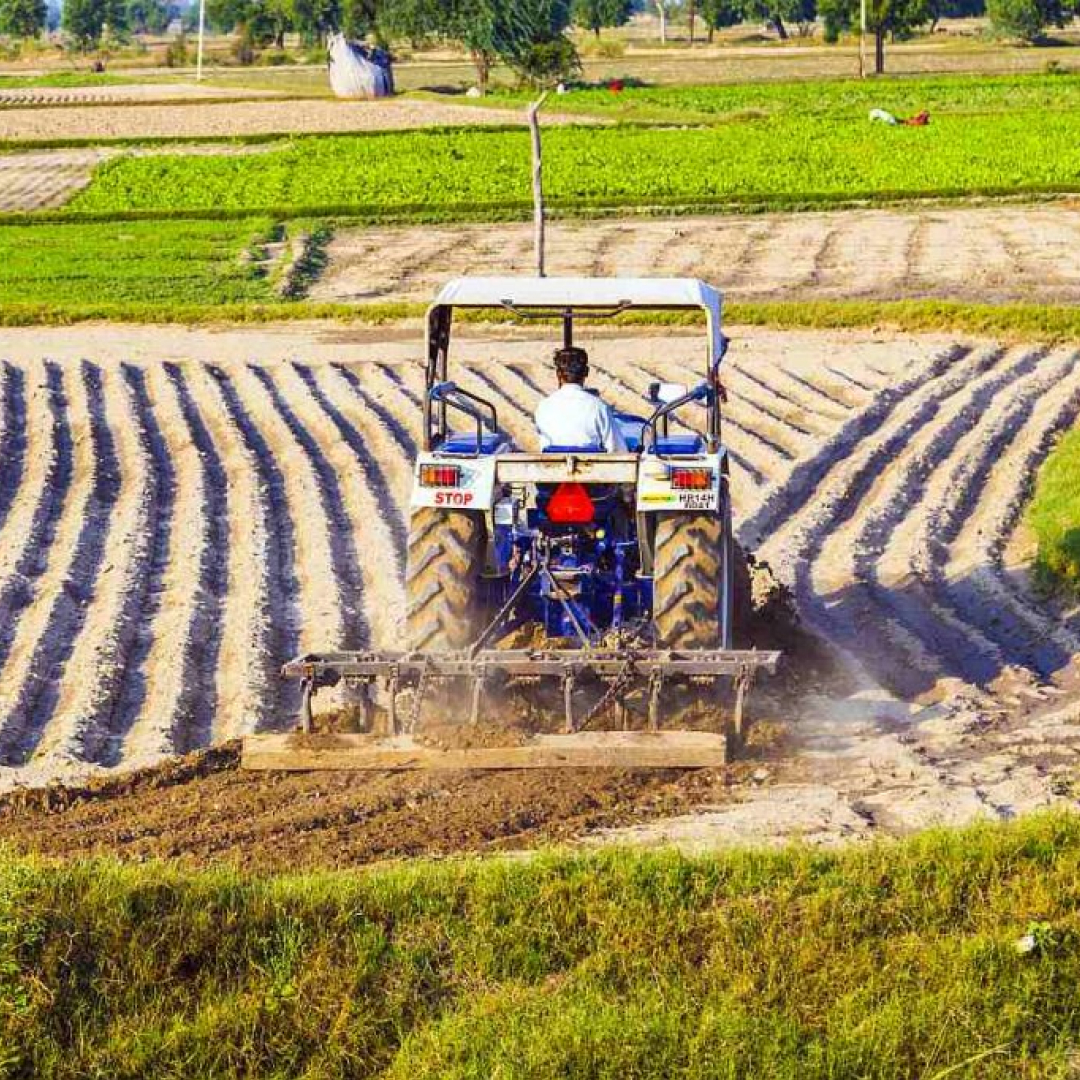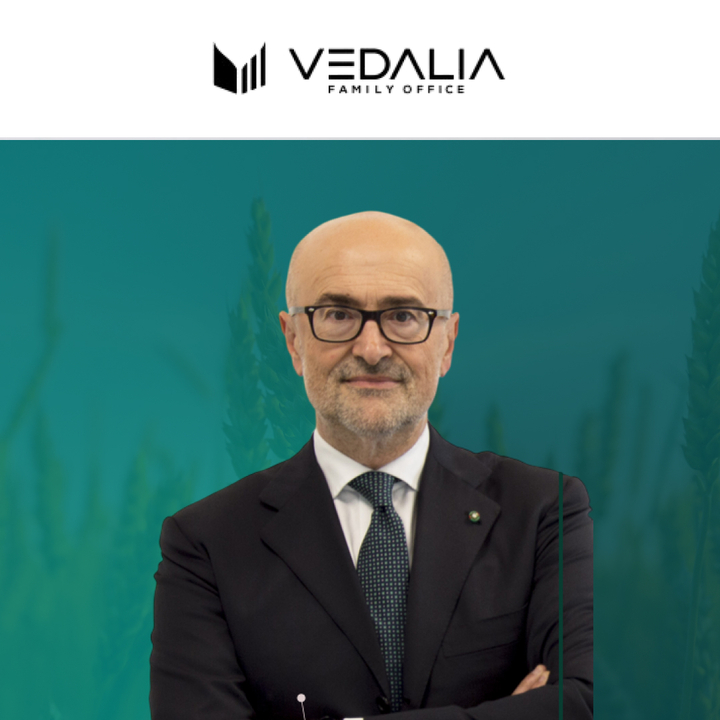
TRANSFORMING AGRICULTURE: ASHWANI’S JOURNEY TO SUSTAINABLE FARMING
In the heart of Ujjain, Madhya Pradesh, Ashwani Singh Chauhan has spent over two decades redefining sustainable agriculture on his 17-acre farm. His journey is a powerful blend of perseverance, tradition and innovation.
Farming is deeply rooted in the Chauhan family, but when the time to choose a path came, Ashwani and his brother took different directions—one into wildlife conservation and the other into agriculture. Driven by a deep passion for the land, Ashwani embraced farming in 1999 as his future, setting out to shape his own legacy.
Recognizing the growing need for sustainable practices, Ashwani began transitioning to BioAg in 2005, completing the shift by 2010-11. Rather than making an abrupt switch, he opted for a gradual transition, believing that this approach would allow his soil and crops to adapt effectively while maintaining productivity.
Today, Ashwani exclusively uses biological inputs, such as Jawaharlal Nehru Bio, vermicompost and Rajasthan compost. His commitment to BioAg is evident in the quality of his produce and the sustainability of his practices. By integrating both conventional and biological methods, he has achieved high yields while preserving the ecological balance of his farm.
The transition to BioAg has been highly rewarding. Ashwani’s crops are healthier, more resilient to pests and diseases, and require fewer chemical interventions. His balanced approach allows him to benefit from both traditional and sustainable farming practices, optimizing his farm’s productivity and environmental impact.
Ashwani believes that BioAg is the future of agriculture, but he encourages fellow farmers to adopt it gradually. He stresses the importance of understanding soil health and making informed decisions before fully committing to organic farming. Through his advocacy, Ashwani has inspired many in his community to explore sustainable farming, fostering a movement towards greener, more resilient agricultural practices.
FROM AIRLINE COMPANY TO FLOURISHING FIELDS: SARTAAJ SINGH’S SUSTAINABLE FARMING SUCCESS
In Shahjahanpur, Uttar Pradesh, Sartaaj Singh’s journey from aviation to agriculture is a remarkable story of transformation. Once a professional with Jet Airways, he returned to his family’s 72-acre farm in 2017 after the recession forced a career change. Determined to make a difference, he began integrating BioAg solutions with traditional farming.
By incorporating biofertilizers like GP Bio and ZX Coromandel, Sartaaj now uses BioAg products for 30–40 percent of his inputs. His transition, however, was not easy. In his first year, a lack of knowledge on biological methods led to no immediate results. Instead of returning to conventional practices, he invested time in learning and experimenting. By his second year, the results were clear: improved crop production, healthier soil and a more sustainable farm.
Beyond his own farm, Sartaaj actively promotes BioAg by training fellow farmers, advocating for sustainable farming practices to improve long-term agricultural productivity and environmental health.
FROM EXPERIMENTATION TO EXCELLENCE: MANOJ’S 100 PERCENTS BIOAG JOURNEY
Manoj, a farmer from Kota, Rajasthan, has pioneered sustainable agriculture in his region. With more than a decade of farming experience, he decided to switch to BioAg in 2019, driven by a desire to explore new methods. What started as a trial quickly turned into a full commitment to organic and biological farming.
Now managing 30 acres, Manoj exclusively uses BioAg inputs, selecting biofertilizers, biopesticides, and biostimulants like cow dung, neem oil and Jeeva Amrit to maintain soil health and improve crop productivity. Since switching to BioAg, he has noticed significant improvements, including better soil fertility, stronger crop resilience and higher-quality yields.
Manoj’s success highlights the benefits of sustainable farming. Eager to share his experiences, he actively promotes BioAg to fellow farmers, encouraging them to choose organic solutions over chemical ones. His efforts are helping reshape farming practices in Kota and beyond.
FROM SOFTWARE SCREENS TO GREEN FIELDS: THE JOURNEY OF JAMINI KRISHNA
During the COVID-19 lockdown, Jamini Krishna’s life took an unexpected turn. A former software engineer, he longed for a simpler, more peaceful existence. Embracing this realization, he left his corporate career to become a full-time farmer in Kishanganj, Bihar, managing 27 acres of land.
With no prior farming experience, Jamini sought sustainable methods and discovered BioAg. By 2021, he had fully transitioned to biological agriculture, using vermicompost, Pseudomonas and Vaanya micro to maintain soil health and reduce chemical reliance.
His journey revealed the strengths of both conventional and BioAg methods, but he found fulfillment in fostering a sustainable ecosystem. Encouraged by his success, Jamini now advocates for BioAg, inspiring fellow farmers and urban professionals to explore regenerative farming.
EMBRACING NATURE’S BOUNTY: A SUCCESS STORY OF BIOSTIMULANT AND BIOAGENT USAGE
Ravindra Singh, a dedicated farmer from Kotarkhana, Yamunanagar cultivates 50 acres of land, growing wheat, paddy, and sugarcane. Two years ago, he made the shift from conventional farming to sustainable practices, replacing chemical fertilizers and pesticides with bio-stimulants and bio-agents like InnoAg Stimgo MGR, PeprRhiza 50 and Start 14:14:14.This transition was driven by his desire to improve crop yield, enhance quality, and reduce biotic and abiotic stresses
The results have been transformative. Ravindra has seen an increase in yield by two to three quintals per acre and a noticeable improvement in grain quality, with better nutritional value and appearance. His crops are also more resilient, thanks to reduced stresses.
Encouraged by his success, Ravindra plans to continue using bio-stimulants and bio-agents, promoting sustainable agriculture and inspiring other farmers to adopt nature-based farming solutions.
RAJINDRA RATHI’S SHIFT TO SUSTAINABLE FARMING
Rajindra Rathi, a farmer from Kathwala village in Haryana, has seen remarkable changes in his 15-acre farm over the last two years. After years of using chemical fertilizers and pesticides for wheat and paddy, Rajindra switched to bio-stimulants and bioagents, specifically InnoAg Stimgo MGR.
This transition led to improved grain quality, with healthier, more vibrant crops. The resilience of his plants increased, and he observed a yield boost of two to three quintals per acre. Rajindra is now a firm believer in sustainable farming and encourages fellow farmers to embrace nature-based solutions to improve yields, soil health and income while benefiting the environment.
PRADEEP KUMAR’S GREEN REVOLUTION
Pradeep Kumar, farming 35 acres in Kheda Haibatpur, Haryana, transitioned to sustainable farming two years ago, replacing chemical inputs with bio-stimulants and bio-agents, including InnoAg Stimgo MGR and InnoAg Start 14:14:14.
This shift resulted in a two to three quintal per acre yield increase, with improved crop quality and reduced plant stress. The bio-products not only enhanced the appearance of his crops but also boosted their nutritional value. Inspired by his success, Pradeep advocates for bio-based solutions and aims to encourage other farmers to adopt these practices for a sustainable future.
KARAN SINGH’S SUSTAINABLE FARMING JOURNEY
Karan Singh, a farmer from Galoli, Haryana, transitioned to bio-stimulants and bio-agents two years ago after noticing the declining soil health and rising costs of chemical inputs. By adopting products like InnoAg Stimgo MGR and InnoAg PeprRhiza 50, he observed significant improvements in crop yield, with a three to four quintal per acre increase.
His soil regained vitality, and the quality of his wheat and paddy improved. With reduced pesticide and fertilizer expenses, Karan’s farm became a model for sustainable agriculture, and he now encourages others to make the switch for a greener future.
RAME KUMAR’S TRANSITION TO ECO-FRIENDLY PRACTICES
Rame Kumar, farming eight acres in Yamunanagar, Haryana, adopted bio-stimulants and bio-agents like InnoAg Stimgo MGR and InnoAg Pro Plus, two years ago. After moving away from chemicals, Rame saw his paddy yield increase by two to three quintals per acre, with improved grain quality. The switch also led to healthier soil, less stress on plants and a more diverse ecosystem. Inspired by his success, Rame Kumar now advocates for eco-friendly farming methods, proving that high yields and environmental sustainability can go hand-in-hand.
RAKESH KUMAR’S REVOLUTION IN FARMING
Rakesh Kumar, a farmer from Rajedi, Haryana, transitioned from chemical-based farming to bio-stimulants and bio-control agents in 2022. Using InnoAg Stimgo MGR, he saw a three to four quintal per acre increase in yield, improved pest management, and healthier soil. His use of organic inputs reduced chemical costs by 25 percent, boosting his farm’s profitability.
Encouraged by these results, Rakesh plans to expand his use of bio-inputs and train neighboring farmers. His success story is a shining example of how sustainable practices can enhance productivity and environmental health.







Leave a Reply